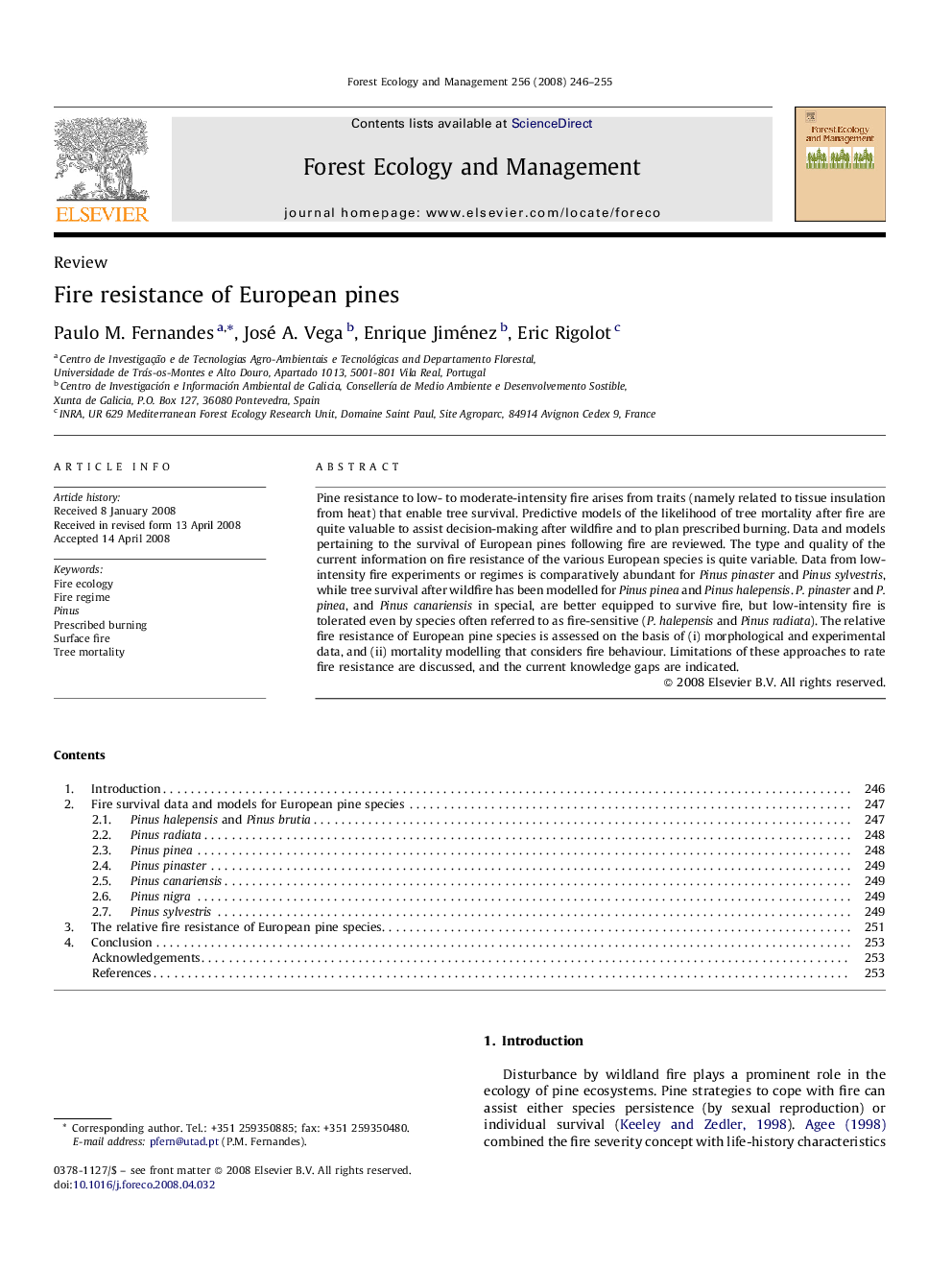| Article ID | Journal | Published Year | Pages | File Type |
|---|---|---|---|---|
| 88882 | Forest Ecology and Management | 2008 | 10 Pages |
Pine resistance to low- to moderate-intensity fire arises from traits (namely related to tissue insulation from heat) that enable tree survival. Predictive models of the likelihood of tree mortality after fire are quite valuable to assist decision-making after wildfire and to plan prescribed burning. Data and models pertaining to the survival of European pines following fire are reviewed. The type and quality of the current information on fire resistance of the various European species is quite variable. Data from low-intensity fire experiments or regimes is comparatively abundant for Pinus pinaster and Pinus sylvestris, while tree survival after wildfire has been modelled for Pinus pinea and Pinus halepensis. P. pinaster and P. pinea, and Pinus canariensis in special, are better equipped to survive fire, but low-intensity fire is tolerated even by species often referred to as fire-sensitive (P. halepensis and Pinus radiata). The relative fire resistance of European pine species is assessed on the basis of (i) morphological and experimental data, and (ii) mortality modelling that considers fire behaviour. Limitations of these approaches to rate fire resistance are discussed, and the current knowledge gaps are indicated.
